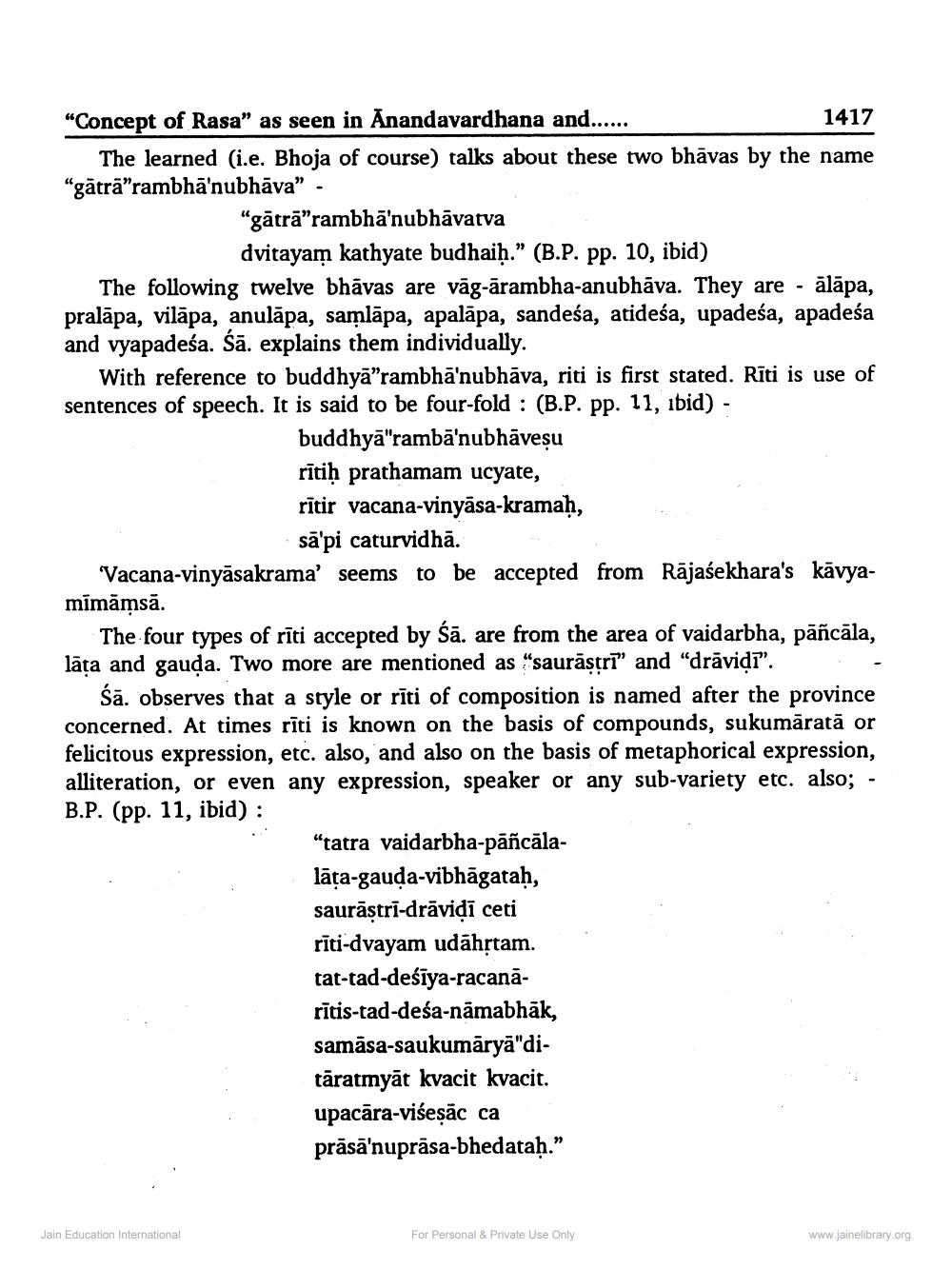________________
“Concept of Rasa” as seen in Anandavardhana and.
1417 The learned (i.e. Bhoja of course) talks about these two bhāvas by the name "gātrā"rambhā'nubhāva".
"gātrā"rambhā'nubhāvatva
dvitayam kathyate budhai).” (B.P. pp. 10, ibid) The following twelve bhāvas are vāg-ārambha-anubhāva. They are - ālāpa, pralāpa, vilāpa, anulāpa, samlāpa, apalapa, sandeśa, atideśa, upadeśa, apadeśa and vyapadeśa. Šā. explains them individually.
With reference to buddhyā"rambhā'nubhāva, riti is first stated. Rīti is use of sentences of speech. It is said to be four-fold : (B.P. pp. 11, ibid) -
buddhyā"rambā'nubhāveșu rītiḥ prathamam ucyate, rītir vacana-vinyāsa-kramaḥ,
sā'pi caturvidhā. Vacana-vinyāsakrama' seems to be accepted from Rājasekhara's kāvyamīmāmsā.
The four types of rīti accepted by Śā. are from the area of vaidarbha, pāñcāla, lāța and gauļa. Two more are mentioned as "saurāsțrī” and “drāviļi”.
Śā. observes that a style or rīti of composition is named after the province concerned. At times rīti is known on the basis of compounds, sukumāratā or felicitous expression, etc. also, and also on the basis of metaphorical expression, alliteration, or even any expression, speaker or any sub-variety etc. also; - B.P. (pp. 11, ibid) :
"tatra vaidarbha-pāñcālalāța-gauda-vibhāgataḥ, saurāștrī-drāviļi ceti rīti-dvayam udāhstam. tat-tad-desīya-racanarītis-tad-deśa-nāmabhāk, samāsa-saukumāryā"ditāratmyāt kvacit kvacit. upacāra-viśeşāc ca prāsā'nuprāsa-bhedataḥ.”
Jain Education International
For Personal & Private Use Only
www.jainelibrary.org




